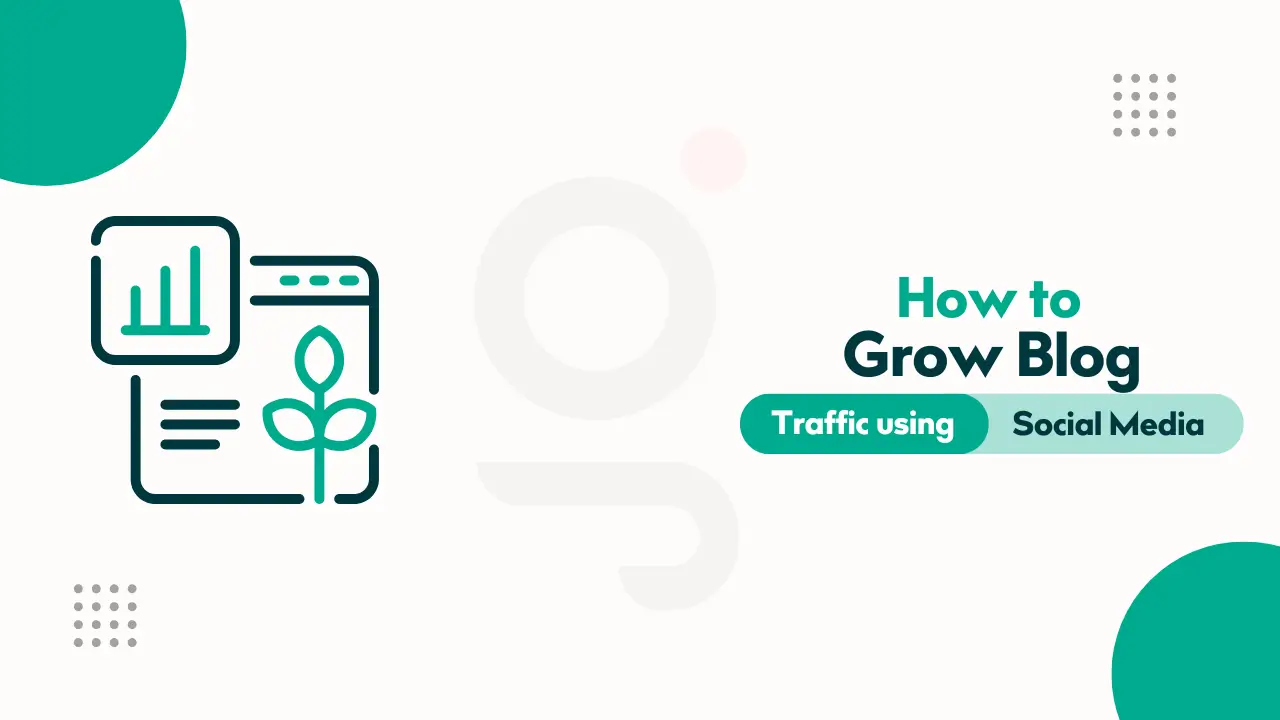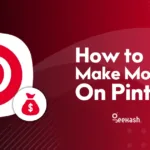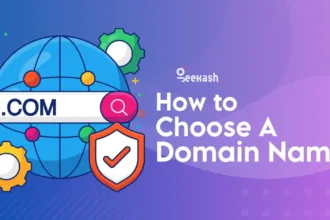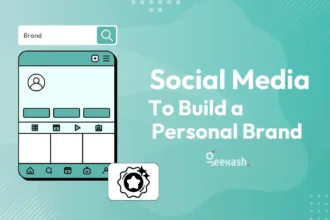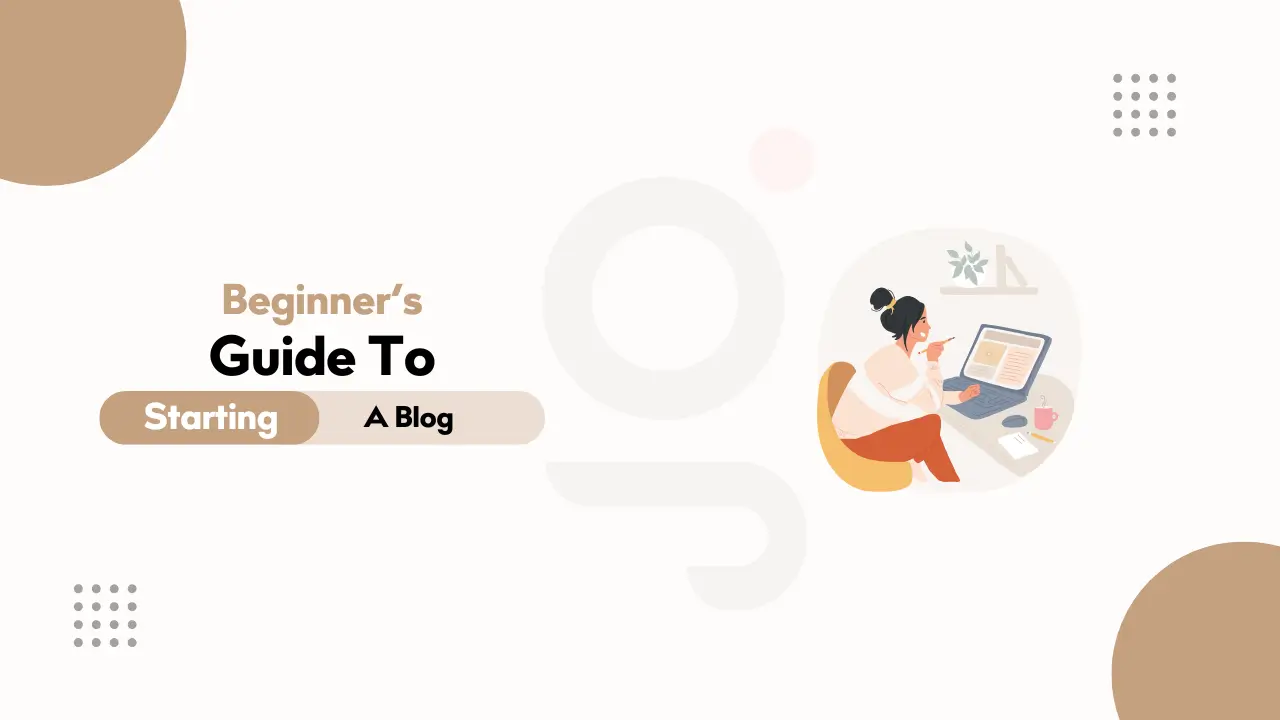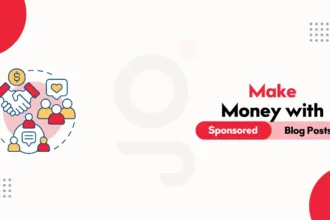Social media can help your blog discover its full potential and attract more readers. Recent studies reveal that blogs that regularly promote content on social media see up to 31.5% more traffic than those that depend only on organic search. It would be best if you had proven ways to grow blog traffic using social media, and this piece will guide you through each step.
This piece covers ten ways that work to amplify your blog’s reach through social media marketing. You will discover how to pick platforms that match your niche and create content your audience wants to share. These practical methods will boost your website traffic through social media and help maintain strong conversion rates.
How to Grow Blog Traffic Using Social Media
Boosting your blog’s reach doesn’t have to feel like a daunting task. By leveraging the power of social media, you can effectively increase traffic, engage readers, and expand your network. The key lies in understanding how each social platform can serve as a conduit for attracting and retaining your ideal audience.
Utilizing social media can significantly elevate your blog’s visibility. It’s not just about broadcasting new posts – it’s about building relationships and sparking conversations that resonate with your audience. Implementing thoughtful strategies on platforms where your readership is most active can turn casual visitors into loyal followers, ultimately driving sustained traffic growth to your blog.
Achieving this begins with a strategic approach. Focus on crafting captivating narratives and content that resonates both with your existing audience and potential readers. Tap into various social media tools like Crowdfire and features to streamline your promotional efforts, making it easier for your followers to share and interact with your content.
Moreover, understanding the unique characteristics and algorithms of each social platform enables you to tailor your approach, ensuring you are not only seen but also heard amidst the noise. This section explores six powerful ways to grow blog traffic using social media effectively, empowering you with the knowledge to elevate your online presence.
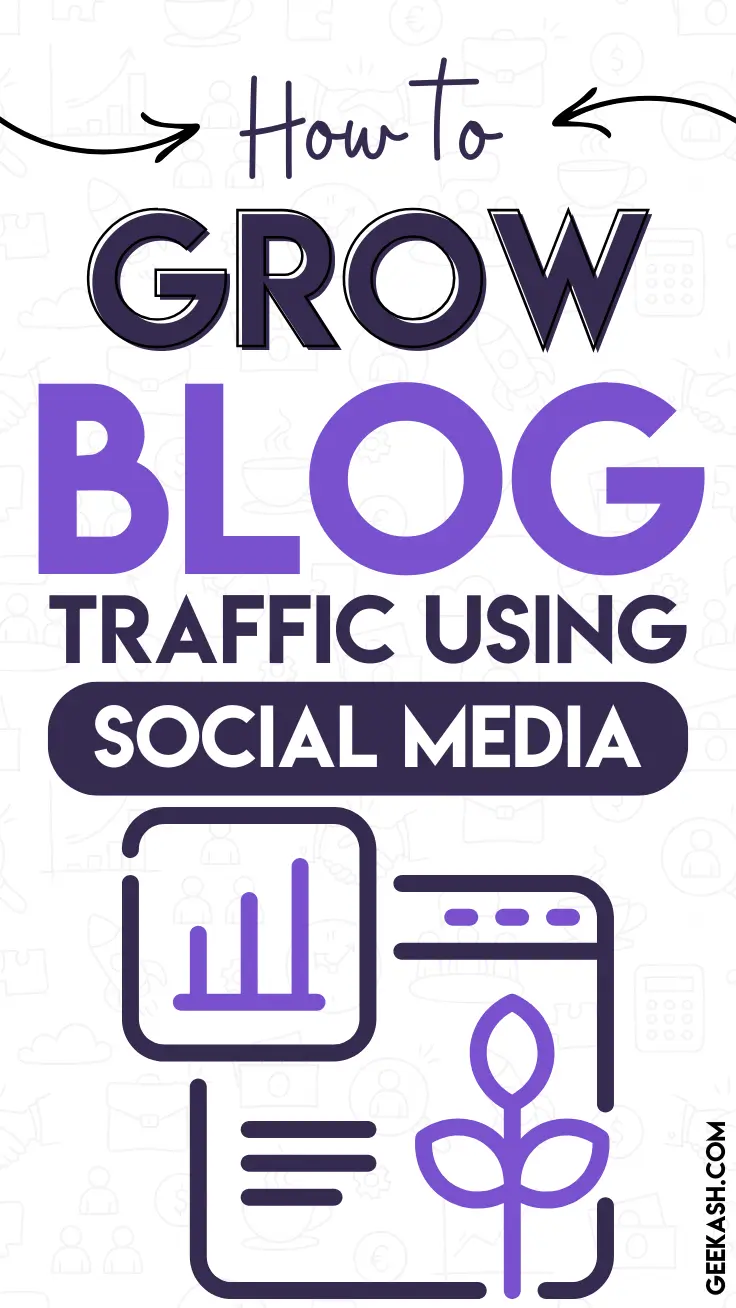
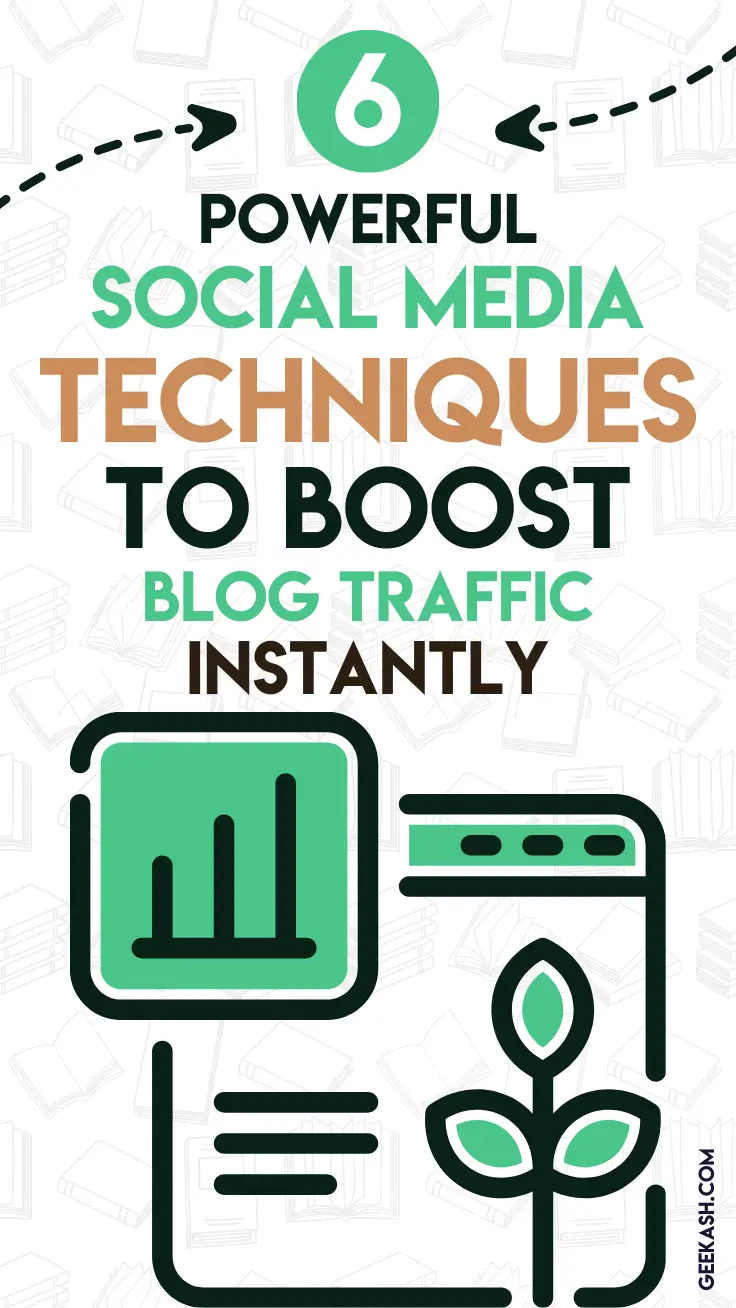
Choose the Right Social Media Platforms for Your Blog
The right social media platform selection is significant to maximize your blog’s reach. 93.4% of internet users active on social media 1 demands a smart approach to effectively invest your time and effort.
Analyze your target audience.
Your ideal reader’s detailed profile should be your starting point. Think about their age, interests, and how they behave online. You need to understand who they are and the platforms they prefer. To name just one example, 75% of internet users use social media to research products 2. This makes platform selection crucial when your target audience looks for information.
Review platform demographics
Social media platforms attract distinct audience segments that shape their unique environments:
- Instagram appeals to Millennials and Gen Z users. The platform’s visual nature makes it perfect for image-rich blogs 2
- LinkedIn draws 57.2% male users and business professionals. This makes it an ideal space for B2B content 2
- Facebook connects with people across all age groups. The platform shows steady user growth among seniors aged 65 and above 2
- TikTok resonates with younger audiences. The platform has 41% of users between 16-24 years old and works best for youth-focused content 2
- Pinterest’s user base consists mainly of upper-middle-class women. The platform has 38% of users between 50-65 2
Pick your blog’s niche and content type.
Your content format should match each platform’s strengths. Visual brands usually do well on Instagram and Pinterest 3, while professional content gets better results on LinkedIn. YouTube gives you the highest average session duration at 7 minutes and 29 seconds 1 if you make video tutorials.
The platform you pick needs to line up with your content type and business goals. To name just one example, Facebook might be your best choice if you want to build relationships with existing readers since it leads globally in monthly engagement across generations 4. But if you target younger audiences with visual content, Instagram or TikTok might give you better ways to connect.
You don’t need to be everywhere – stick to platforms where your content will appeal most to readers. People spend an average of 2 hours and 24 minutes on social media daily 1, so you should be active on platforms where your target audience hangs out and engages the most.
Optimize Your Social Media Profiles
A well-optimized social media profile plays a significant role in building your professional online presence and attracting traffic to your blog. Your social media profiles work like digital storefronts that must remain polished and welcoming to draw potential readers.
Use consistent branding on all platforms.
Your brand’s trust and recognition grow stronger when you maintain consistency on social media 5. Your social media presence needs these elements to stay consistent:
- Account name and display name
- Profile picture (usually your logo)
- Cover photos and branded visuals
- Color scheme and typography
- Core messaging and voice
Research shows that consistent branding on platforms improves mental availability and builds audience trust by a lot 5. You should audit your social media content regularly to keep this consistency. Many brands think about reviewing their profiles monthly or quarterly 5.
Write compelling bios with keywords.
Your social media bio is a vital first impression that works like a welcome mat for your content 6. Platform character limits vary – 150 characters for Instagram, 80 for TikTok, and 101 for Facebook’s intro section 6. The key is to naturally weave relevant keywords into your descriptions.
Keywords placed strategically in your bio sections boost your visibility in social media searches 7. The first 140 characters of your bio appear in search results, so lead with your most important information 8. Your bio should effectively convey:
- Who you are and what you do
- Your unique value proposition
- Your brand’s personality
- A clear call-to-action
Include links to your blog
Your blog needs smart link placement to drive traffic effectively. Over 50% of marketers emphasize the importance of visual content 9. Make sure your linked pages work well on mobile devices since most users check social profiles on their phones 10.
Your website URL should stand out in bio sections on every platform. Link-in-bio tools work great for platforms that limit linking options and create an easy path to your blog content. Verified accounts boost trust in your profile and commercial posts 8, which often leads to better click-through rates.
Your profile links need regular updates to showcase fresh content and key landing pages. The main website link should stay the same on all platforms to build brand trust 11.
Create Shareable Content for Social Media
Shareable content plays a significant role in expanding your blog’s reach in today’s digital world. You need to become skilled at creating engaging social media content, especially since 41% of content creators post visuals between two and five times per week 12.
Craft attention-grabbing headlines
Headlines determine your social media success. Studies reveal that 80% of people will read your social media headline, while only 20% will click through 13. A compelling headline should:
- Pack emotional power words
- Stay within 60-70 characters
- Feature relevant numbers and statistics
- Raise questions that trigger curiosity
- Drive action through strong language
Use eye-catching visuals
Your social media success depends on visual content. The human brain processes visuals 60,000 times faster than text . Research shows that infographics get 12% more traffic and 200% more shares than text-only posts 15.
These visual content practices will boost your engagement:
- Pick high-quality images that line up with your brand
- Transform your data-heavy blog posts into infographics
- Add your brand elements consistently
- Try different visual styles on each platform
- Add compelling calls-to-action to your visuals
Repurpose blog content for social posts
The 80/20 rule of content marketing suggests you should spend 20% of your time creating content and 80% promoting it. Your blog posts can become powerful social media content in multiple formats.
Blog posts make excellent carousel posts on Instagram and LinkedIn. Studies show that carousels are visually pleasing and highly educational 15. Complex topics break down naturally into this format. Your key statistics can become eye-catching quote graphics, as several studies have shown the importance of visual content in getting higher engagement rates .
Your blog content serves as a great foundation for short-form videos. Video marketing isn’t just the future; it’s the present . A complete blog post can yield multiple video snippets, each highlighting a specific point or tip. This strategy helps you reach new audiences that you may have missed the first time around 15.
Your visual branding should stay consistent throughout all repurposed content. Social media posts work best as native content rather than simple link drops 15. This approach typically gets better engagement and reach.
Engage and Build a Community
Meaningful connections with your audience are the lifeblood of successful social media marketing. 51% of consumers say the most memorable brands on social media are those that respond to customers 16. This makes customer participation a significant part of your growth strategy.
Respond to comments and messages.
Quick response times can significantly impact your social media success. 83% of global consumers expect a response within 24 hours 17. Your engagement levels will improve when you:
- Schedule dedicated time blocks to respond to comments
- Create personalized responses that show authenticity
- Handle both positive and negative feedback professionally
- Use saved replies for common questions while adding personal touches
Your responses should strike the right balance between professionalism and personality. 74% of consumers rely on social media to help them make purchasing decisions 17, which means each interaction becomes a valuable chance to highlight your brand’s worth.
Host Q&A sessions or live streams
Q&A sessions create dynamic connections with your audience through instant interaction. These sessions work well because they provide immediate interaction and promote a sense of community among participants 18. Here’s how you can maximize their effectiveness:
- Pick topics that strike a chord with your audience
- Share session details on all your platforms
- Gather questions beforehand
- Connect with participants instantly
- Share a recap post afterward
Live streams effectively boost engagement because they allow you to answer questions, showcase your expertise, and chat with followers instantly 19. This makes your followers feel like they’re part of your brand’s journey.
Encourage user-generated content
User-generated content (UGC) helps build communities effectively, and people are 10 times more likely to trust your brand when you publish UGC 20. Your audience needs the right motivation to create content.
Creative challenges excite users and expand their creative or physical limits. Successful brands design multi-day challenges where participants showcase their progress on social media 20. This strategy gets more content and builds a stronger community around your blog.
An ambassador program treats loyal fans like VIPs. By offering exclusive perks and recognition, your ‘ambassadors’ are more likely to create consistent content about your brand 20. Credit creators whenever you share their content to build trust and encourage more participation within your community.
The right tools help you monitor new content 20 and capture all contributions effectively. This comprehensive strategy keeps your community active and engaged while providing fresh content for your social media channels.
Leverage Influencer Partnerships
Collaborations with influencers can substantially magnify your blog’s reach and build credibility. The influencer marketing sector has expanded to USD 21.10 billion in 2023 21, and this makes it a powerful channel that drives blog traffic through social media.
Identify relevant influencers in your niche.
The right influencer match plays a vital role in your success. 58% of people have purchased items based on influencer recommendations within the last six months 22. This strategy works best when your blog authentically lines up with the influencer’s audience.
Here’s how you can assess potential mutually beneficial alliances:
- Check engagement rates over follower count
- Analyze audience demographics and interests
- Review content quality and consistency
- Get into their values and brand alignment
- Calculate their engagement rate using likes and comments
Note that tracking social media mentions of your brand 23 might lead you to influencers who already participate in your content naturally.
How to cooperate on content creation
Authentic content cooperation powers successful influencer partnerships. Here are proven partnership formats that work:
- Sponsored blog content with social promotion
- Brand advocacy programs for long-term relationships
- Influencer gifting with honest reviews
- Affiliate marketing partnerships
- Social media takeovers and live sessions
Your collaboration agreements should clearly define expectations, terms, and conditions 24. The agreement has to specify content types, posting frequency, and disclosure requirements for sponsored content.
Cross-promote each other’s content.
Cross-promotion creates a win-win situation for both parties. Campaigns with the right influencers can deliver up to a 19x return on investment 25. Your cross-promotion strategy will work better when you:
Long-term relationships work better than one-off campaigns. Influencer marketing works best when it’s an ongoing partnership 21. Both parties can create authentic content that appeals to their audiences.
Different influencer tiers can boost your reach. Mega-influencers have over one million followers 21. However, micro-influencers (10,000-50,000 followers) often generate higher engagement rates and targeted reach.
Your KPIs will help track results effectively. Each partnership needs clear objectives – whether you want more website traffic, social media followers, or better conversion rates. Having access to ‘the numbers’ helps you replicate success 25 and make future collaborations better.
A detailed collaboration package will give your influencers everything they need. The package should include:
- Brand style guidelines
- Key messaging points
- Promotional templates
- Custom discount codes
- Tracking links
This structured approach maintains consistency while giving influencers creative freedom to connect authentically with their audience.
Analyze and Refine Your Social Media Strategy
Social media marketing thrives on measuring and refining strategies. Analytics tools help brands using analytics tools are 2.3 times more likely to report improved ROI 26.
Track key metrics and KPIs
Your social media performance measurement starts with the right metrics. These KPIs are the foundations of successful tracking:
- Engagement Rate: Shows how your audience interacts with content as a percentage 26
- Reach: Tracks unique users viewing your content 27
- Click-Through Rate (CTR): Shows the percentage of users who click your links 26
- Conversion Rate: Measures social visitors completing desired actions 26
- Share of Voice: Compares your brand’s mentions against competitors 27
Social media metrics reveal what works and why it works. A recent study shows that 41% of marketers report that measuring ROI is their biggest challenge 26. Setting up clear tracking systems is a vital part of social media success.
A/B test different types of content
A/B testing optimizes your content strategy with systematic experiments. Social media A/B testing can substantially boost your participation rates 28. These steps help your testing to work:
- Create a clear hypothesis
- Develop two content variations
- Change just one variable per test
- Allow enough time for each test
- Gather and examine data
- Apply successful variations
Your sample size must be statistically significant to validate test results. The longer your test runs, the more accurate the results will be 28. Test these common elements:
- Content types (text, images, videos)
- Headlines and copy options
- Visual elements and designs
- Call-to-action phrases
- Best times and frequency to post
Adjust posting frequency and timing
Your posting schedule affects content performance naturally. Most social media marketers (35%) post on Facebook multiple times per day 29, and optimal frequency varies by platform:
| Platform | Recommended Frequency | Best Times |
|---|---|---|
| 1-2 posts daily | Multiple times per day 29 | |
| 2-3 posts daily | Stories: couple per day 29 | |
| Multiple times weekly | Weekly check-ins 29 | |
| Multiple times daily | Higher frequency 29 |
Engagement is a vital factor in social media algorithms. When algorithms were chronological, higher frequency was always better, but now quality matters more than quantity 29.
Analytics help identify your audience’s most active periods. Social media algorithms tend to favor recent content 30, and posting during peak engagement hours can boost visibility substantially.
These timing factors lead to optimal results:
- Your target audience’s time zone
- Platform-specific peak hours
- Content type and purpose
- Industry trends and patterns
Performance data should guide your strategy adjustments. Social media metrics allow you to track every detail of your performance 26, which helps make informed decisions about content, timing, and engagement strategies.
Website clicks and email subscribers are key conversion metrics. These indicators show whether your social media efforts create tangible business results 31. Testing different strategy elements and reviewing results through social media metrics helps maintain your approach’s relevance and effectiveness.
Conclusion
You just need to combine targeted platform choices, engaging content, and genuine community participation to succeed on social media. Successful bloggers know their audience well. They create content that appeals to specific platforms and keep their branding consistent everywhere. These basics, along with active community management and mutually beneficial alliances with influencers, are the foundations of steady blog traffic growth.
Informed choices based on data help you achieve lasting success on social media. Your approach becomes more effective through regular metric analysis, systematic A/B testing, and careful timing optimization. Smart bloggers know social media marketing constantly progresses. They adapt their strategies based on performance data while building genuine connections with their audience. These proven methods can turn social media from a basic promotional tool into a powerful catalyst that accelerates blog growth.

